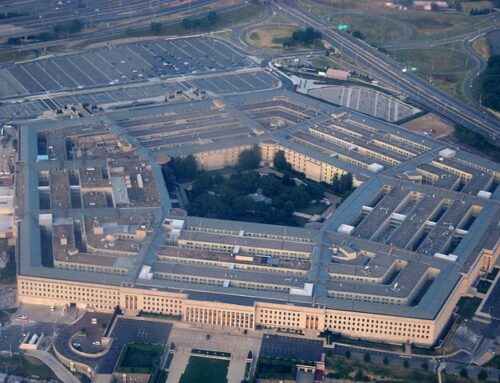This week the House Armed Services Committee takes the first step in congressional consideration and drafting of the National Defense Authorization Act for fiscal year 2015, so I thought I’d take the opportunity to lay out some of the high points (and low points) about what to expect in this year’s bill.
As a starting point, the president’s budget request for the Pentagon is a staggering $496 billion in the “base” budget. This does not include the additional $79 billion for “Overseas Contingency Operations” (what everyone who doesn’t work in the Pentagon calls “war spending.”)
Congress must now take this huge request and work its political will, or lack thereof. Given the nature of the political debate over the Pentagon budget, a large portion of this money, more than $135 billion for all aspects of personnel spending, is almost untouchable. Unfortunately, this is true even though there are plenty of individual items that could be cut within what we loosely call “funding for the troops.” The president’s budget includes some proposals that would achieve savings in this area – like reducing by $1 billion over three years the annual direct subsidy provided to military commissaries (now $1.4 billion). Hopefully, Congress will accept this modest proposal, but don’t count on it. All commissaries in the U.S. should probably be closed outright.
The President’s budget also proposes some modest changes to military medical benefits. In February Defense Secretary Chuck Hagel said, “We will ask retirees and some active-duty family members to pay a little more in their [health care] deductibles and co-pays, but their benefits will remain affordable and generous… as they should be.” Given the pressures on the Pentagon budget it is indeed time to increase what people pay for their generous health care benefits. Analysis done by the non-partisan Congressional Budget Office estimates cost savings of almost $6.5 billion over a five year period if reforms like these were enacted.
Because of Congress’ reluctance to change anything to do with military compensation or benefits, these relatively simple reforms will probably never be enacted. Realistically, if Congress chooses to cut spending, most cuts will come from the massive Operations and Maintenance ($198.7 billion), Research, Development, Test and Evaluation ($63.5 billion) or the Procurement ($90.4 billion) accounts. If past is prologue, Congress will simply move money around between these accounts and not actually reduce the topline of this bloated budget request. But there are certainly procurement programs that are ripe for reduction or cancellation that could save the taxpayer plenty.
Topping the list of programs that could be deeply reduced is the F-35 Joint Strike Fighter. The most recent Government Accountability Office cost estimate, now almost two years old, pegs overall program costs at $395 billion. The Pentagon budget now before Congress requests an eye-popping $8 billion in total program funding for the F-35. This is for procurement, R&D and military construction for all three services planning to purchase the plane. The procurement request is “just” $6.3 billion if you add all three services together, making this one aircraft program roughly 7 percent of the entire Pentagon unclassified procurement budget.
What else could you get for $8 billion? How about the entire Army Reserve? In FY15, $8 billion pays for the Army Reserve Personnel, Operations & Maintenance, Military Construction and Procurement accounts (if you exclude the National Guard and Reserve Equipment Account). And if you venture outside of the Pentagon, you could get the Environmental Protection Agency for $7.9 billion or the Department of Commerce for $8.8 billion. A recent Taxpayers for Common Sense study delves into the budget history of the F-35 and lays out some other alternatives, such as aircraft modernization.
Also on any list of weapon systems for cancellation should be the Littoral Combat Ship. When he rolled out the fiscal year 2015 budget request in February, Hagel had this to say: “The Navy is relying too heavily on the [program] to achieve its long-term goals for ship numbers. Therefore, no new contract negotiations beyond 32 ships will go forward.” Instead, the program could be terminated today to save a lot of money. According to Navy budget documents, the service has only awarded contracts through hull number 20. If the fiscal year 2015 budget request for three additional ships is approved by Congress, contracts for another three ships would be awarded in March 2015. This class of ship is being asked to do too many divergent missions and is doomed to poorly perform all of them. The Navy has already spent at least $9 billion on this program. Cancelling it this year would save at least $1.6 billion in fiscal year 2014 and about $17.5 billion total over the originally proposed life of the program.
These are just a few ideas of places Congress can look for substantial savings in the Pentagon budget. The House Armed Services Committee can take the first step in reducing wasteful spending this week.











Get Social